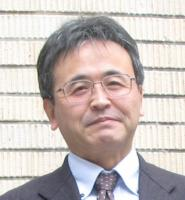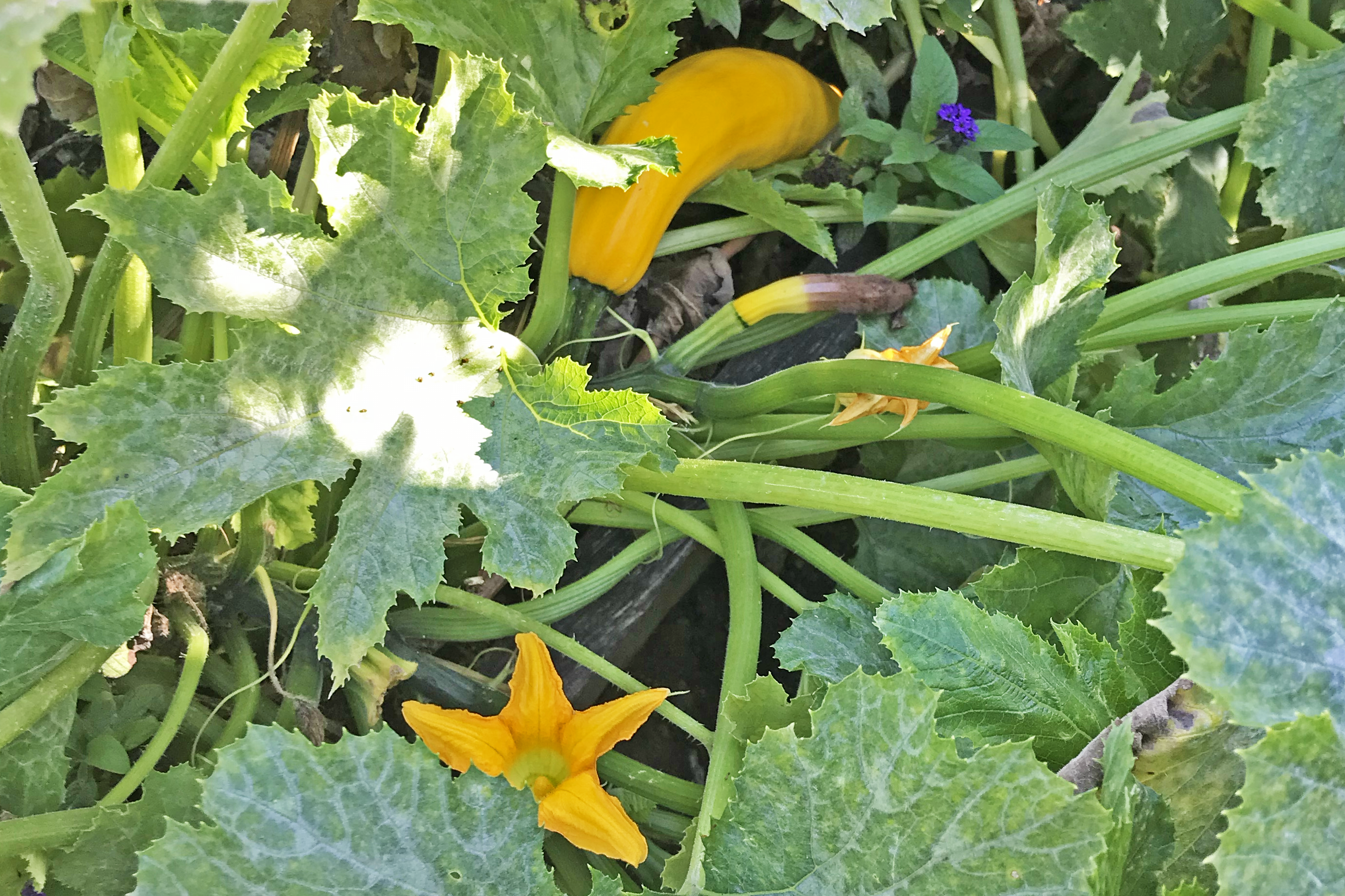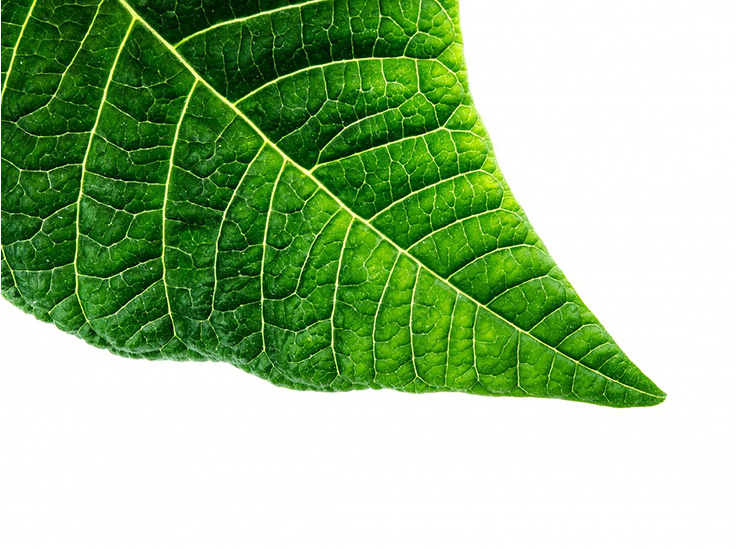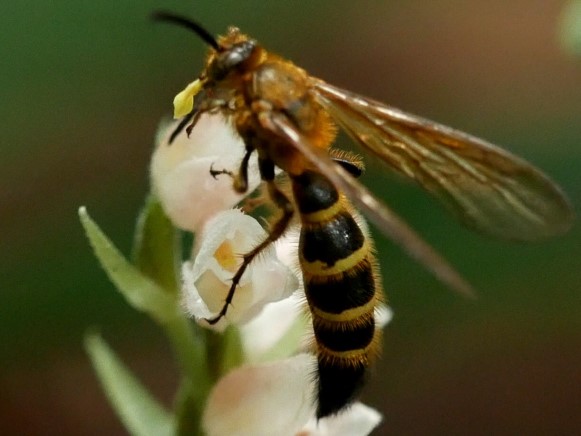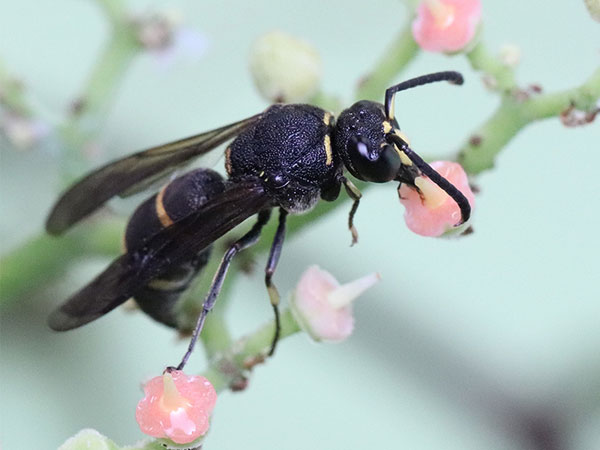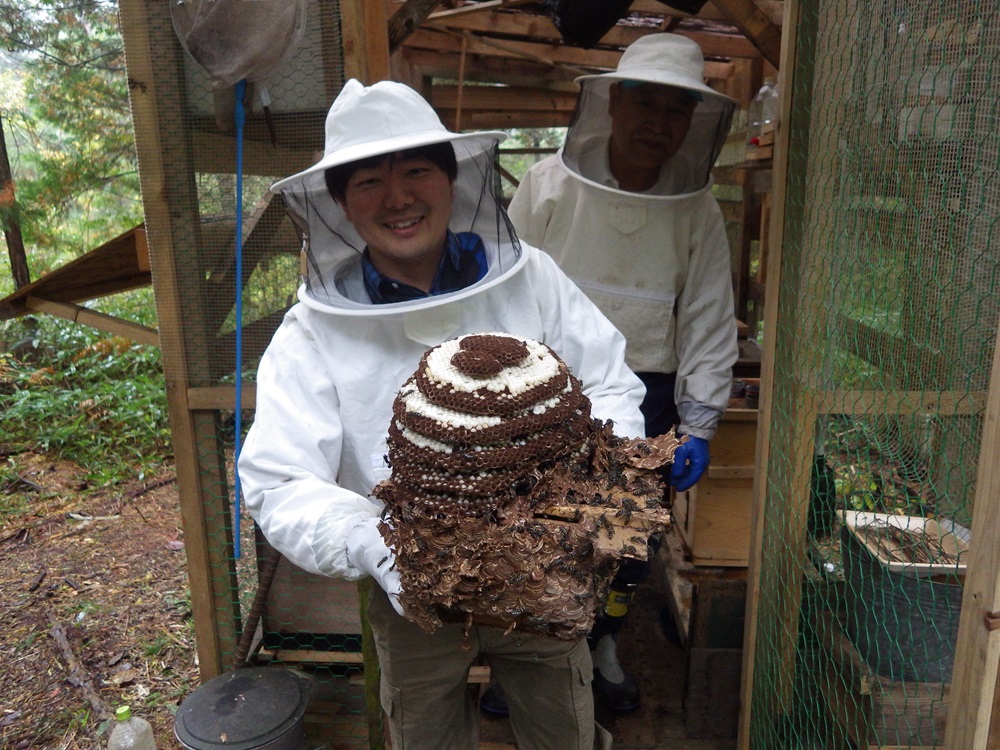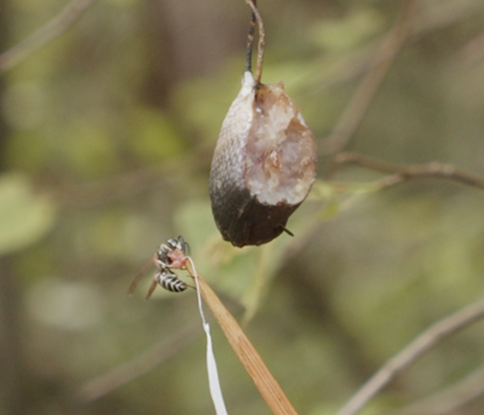The research group led by Dr. Keizo Takasuka in the Graduate School of Agricultural Science, Kobe University, discovered that an ichneumonid parasitic wasp seizes control of the parasitized spider and exploits its 'resting web' building behaviour as seen before moulting. Additionally, Dr. Takasuka et al., examining the threads’ force, found that the web produced through parasitic manipulation is more robust than the resting web. Given that the wasp induces a behaviour inherent in the spider, revealing the molecular mechanism of the web manipulation is likely to contribute to the practical application of spider silk. The pertinent article will be published in the Journal of Experimental Biology.
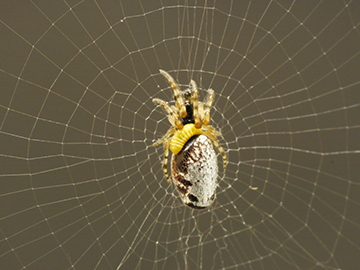
The larva keeps the spider alive until it grows to a particular body size.
Spider-parasitoids (parasitic wasp, family Ichneumonidae) lay eggs on the surface of spider's back and the attached larva imbibes the spider's body fluid externally. After 10–14 days since hatching, the wasp larva starts to turn its host spider into a subordinate which makes tougher web suitable for the wasp's pupal stage (web manipulation) and stays on this web for about 10 days until it develops to the adult stage.
According to research by Dr. Takasuka et al., it has been discovered that the origin of the parasitic manipulation lies in the making of resting web, which unparasitized spiders form before moulting and which has the same structure as the manipulation web 'called cocoon web'. This discovery was made by observing that (1) the structure of a cocoon web formed manipulatively by the silver-plated spider (host spider) is remarkably simple and that (2) there are specific fibrous thread decorations (FTD) which serve to deter flying animals through UV reflection from bumping into the web of fragile moulting spider or metamorphosing wasp larva. Additionally, tensile test revealed that the centre and periphery of the cocoon web are 30 times and 3 times stronger respectively than those of the resting web.
This study verified that the spider-parasitoids induce spider's preprogrammed behaviour by interfering with the spider’s nervous system, and consequently the molecular mechanism of web manipulation is coming closer to being understood. Dr. Takasuka expects that unveiling the molecular mechanism of manipulated spider would contribute to the practical application of spider silk.
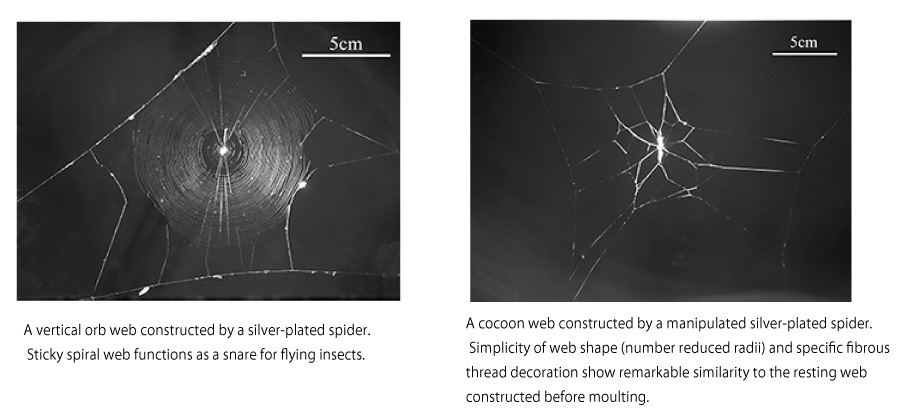
Movie: All sequence of web manipulation of Cyclosa argenteoalba
Journal information
- Title
- “Host manipulation by an ichneumonid spider-ectoparasitoid that takes advantage of preprogrammed web-building behaviour for its cocoon protection”
- DOI
- 10.1242/jeb.122739
- Authros
- Keizo Takasuka, Tomoki Yasui, Toru Ishigami, Kensuke Nakata, Rikio Matsumoto, Kenichi Ikeda, Kaoru Maeto
- Journal
- Journal of Experimental Biology



